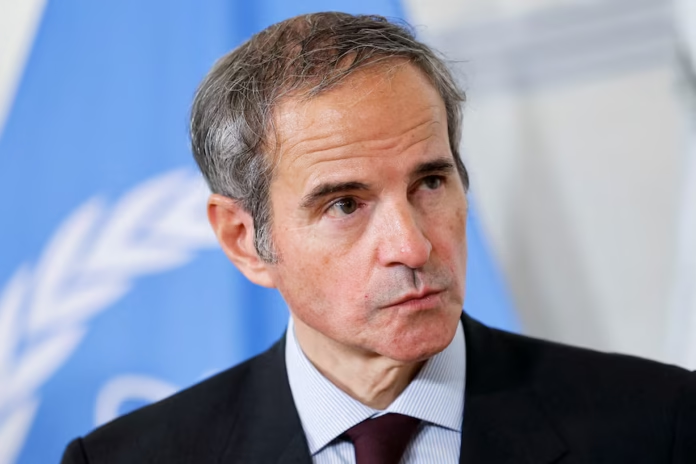The head of the International Atomic Energy Agency (IAEA), Rafael Grossi, warned today that Iran could restart uranium enrichment operations “in a matter of months,” despite recent U.S. and Israeli airstrikes that heavily damaged its nuclear facilities. His remarks directly challenge President Donald Trump’s claim that the raids “obliterated” Iran’s nuclear program. Underscoring both the limits of military action and the enduring threat of nuclear proliferation politico.eu.
Background on Recent Strikes
On June 13 and June 22, coordinated U.S. and Israeli strikes targeted Iran’s Fordow, Natanz, and Esfahan plants. Satellite imagery and on‑the‑ground reports confirm significant damage to centrifuge halls and support buildings. Especially at Natanz where the above‑ground Pilot Fuel Enrichment Plant was nearly destroyed apnews.com. Still, underground facilities at Fordow remain largely intact, protected by deep mountain cover.
IAEA Assessment of Iran’s Capabilities
Grossi told CBS News that “severe damage” occurred but added that it “is not total damage” because Iran retains both its technical knowledge and much of its enrichment infrastructure politico.eu. He noted that inspectors had verified more than 400 kg of uranium enriched up to 60 percent U‑235 just days before the attacks. A stockpile that has no civilian justification and could yield material for nearly ten weapons if further enriched iaea.org. Grossi expressed concern that some of this high‑enriched uranium may have been moved before the strikes, highlighting a verification gap that inspectors cannot easily close reuters.com.
Weapons Status and Verification Gaps
IAEA reports confirm that Iran did not possess a finished nuclear weapon at the time of the strikes. However, unexplained traces of uranium at undeclared sites continue to puzzle inspectors. Grossi pointed out that Iran has yet to provide credible answers about these traces, which raises questions about possible covert activities. Meanwhile, the exact location of the 400 kg stockpile remains unknown, as some may lie hidden under rubble while other portions may have been spirited away.
Breakout Time and Technical Details
Analysts calculate Iran’s “breakout time”—the period needed to enrich enough uranium for a bomb—using models that factor in centrifuge performance and existing low‑enriched uranium (LEU). Under the 2015 nuclear deal, breakout time stretched to around 12 months. Now, with a 60 percent‑enriched stockpile, that interval may shrink to just five weeks because the effort to reach weapons‑grade purity falls dramatically when starting from higher enrichment levels thetimes.co.uk.
Diplomatic and Security Implications
Grossi urged Iran to restore cooperation with the IAEA and stressed that military strikes cannot erase knowledge or technical skills. He called for Iran to allow inspectors back in as soon as possible to verify inventories and to rebuild trust. At the same time, the United States and its allies face a choice between sustained military pressure and renewed diplomatic engagement to prevent a nuclear‑armed Iran.
Short Analysis
In my view, this episode shows that military strikes can delay but not defeat a country’s nuclear ambitions when technical expertise and hidden stockpiles survive. Long‑term nonproliferation depends on sustained inspections, clear verification mechanisms, and meaningful dialogue. Rather than betting on further attacks, policymakers should refocus on diplomatic incentives and robust monitoring to keep Iran’s program in check.

